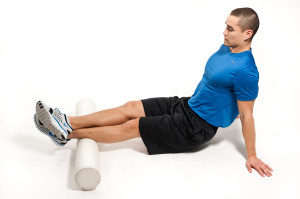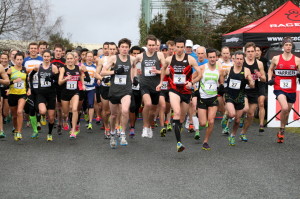Running habits you need to break

Perhaps you’ve recently set a goal to run a PB, or move from the 10K to the half marathon distance. If so, you’ve probably thought about all the new things you need to start doing to achieve your goal. What you should also be thinking about are the things you should stop doing in order to achieve those goals. Here is our list of the top ten running habits you need to break – the nail-biting of the running world, so to speak.
1) Forgoing rest
This is a bad habit that many serious runners deal with on a daily basis. When you’re pushing your limits, both mentally and physically, it can get easy to adopt the mindset that more is always better when it comes to mileage and effort. The best runners out there though, will tell you the importance of rest as a time for your body to recuperate and regenerate. This means sticking to your schedule–honouring off days and resisting the urge to add in an extra workout session or an extra double day.
 2) Waiting to eat
2) Waiting to eat
As busy runners, we tend to fit our run in whatever nook and cranny of our schedule we can–which may mean early mornings, sneaky ‘runches’ (lunch-runs) or late evening adventures. When we have to rush off to our next appointment, it can be easy to fall into the habit of telling yourself, “I’ll grab a bite later.” This creates a twofold set of issues, the first being that your body needs nutritional attention post-run and neglecting that inhibits your optimum recovery and the second being that waiting to eat tends to lead to intense hunger, which may cause overeating, sabotaging some runner’s weight loss goals. Need some ideas to break the habit? If you’re a morning runner, prep a bowl of oatmeal to soak the night before, that you can grab and go right after your run. If you’re an evening runner, I can relate. With team workouts starting at 5:30 most of us weren’t getting home until 7:30 and immediately needing to eat. Talking with my teammates, it seemed like most of us on workout nights favoured meals like omelettes that were quickly prepared and nutrient dense.
 3) Skipping your rolling
3) Skipping your rolling
Does your foam roller sit on the floor of your bedroom/basement/office and silently judge you every time you look at it then walk past? If so, it’s time for a change and in order for this to occur, you need to change your mindset–instead of being an annoying nuisance, take steps to make rolling a positive experience. Make it a bedtime, or post-run ritual–throw on your favourite tunes, take your time and pay attention to trouble spots. Your legs will thank you later.
4) Static stretching beforehand
Static stretching before running is a kinesiology dinosaur, but you still catch people at it. The trick to fixing it? Just swap it for dynamic stretching–leg swings, butt kicks and high knees. Don’t forget arms swings as well–running requires arm motion as well!
5) Comparing yourself to your friends
This can be a tricky habit to break, particularly within running clubs or teams. When the urge to compare grabs you, try and remember who you’re running for. Chance are, your answer is for you, not for so and so.
 6) Heel striking
6) Heel striking
Studies have shown that heel strikers are more prone to running injuries due to the increased force with which their foot hits the ground, radiating impact up the leg. Don’t know if you’re a heel striker? Most running store employees will be able to assess your gait when you come in for a new pair of shoes. Or, you can try taking of your shoes and jogging a bit indoors–the way you run without shoes should be the same as the way you run with shoes. Try and imbed the feeling in your mind and apply it on your runs.
7) Overstriding
This is one bad running habit that I am personally guilty of. Recently, at a physiotherapy appointment, my physio took me up to the track and had me run for him. After a few laps, he pulled me off and told me that my cadence was 160 steps per minute–far under the ideal 180 steps per minute. It wasn’t that I was running slowly, it was that I was taking too few steps; I have long legs and a tendency to use them to their full capacity. He told me to speed up my turnover–taking more smaller steps would decrease my chance of heel striking and putting undue stress on my hip flexors (my personal ‘achilles heel’).
 8) Starting too fast
8) Starting too fast
The most common of all racing habits, starting too fast and then tapering off towards the end is a mistake almost all runners have made at some point in their life. Resist the urge to speed up and the beginning by going in with a race plan of the pace you want to run and sticking to it for the first three-quarters of the race–if you’ve got jam left at the end, that’s when you should go for it.
9) Leaning back on the downhills
Just because I’m suggesting you shouldn’t lean back on the downhills doesn’t mean I’m suggesting you should lean forward (there, now I’ve mitigated my responsibility for an somersaulting). Leaning back on downhills increases the impact of your footfalls, which can lead to injury. Try and keep an upright body and quick turnover.
10) Racing easy days
Believe it or not, your easy days are some of the most important in your training schedule. They allow your body to get the sense of running being effortless, they allow time for recovery from harder days and they are a fun time to relax or enjoy the company of your friends. Resist the urge to push the pace on easy days–doing so will lead to overtraining symptoms of fatigue and will ultimately damage your racing goals.






